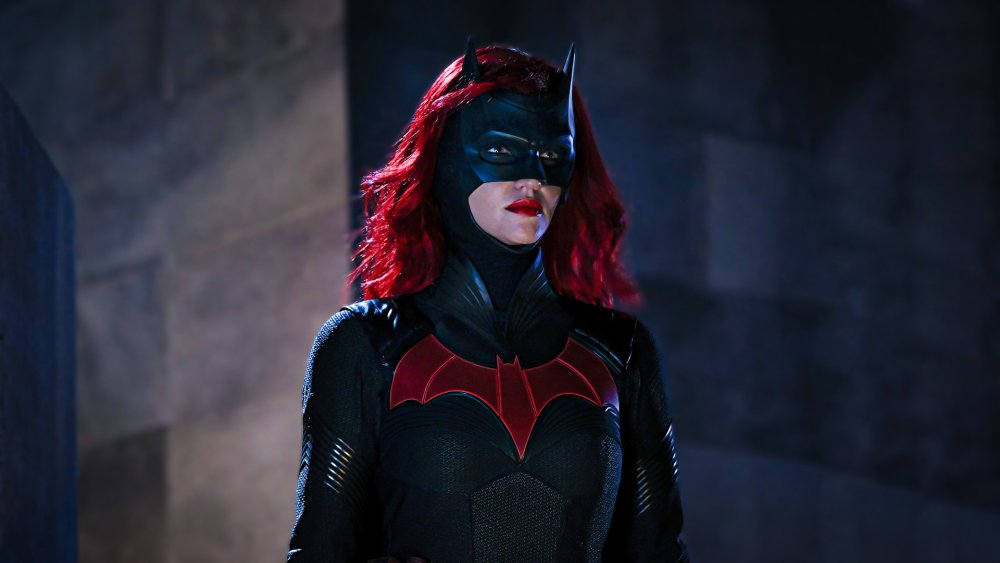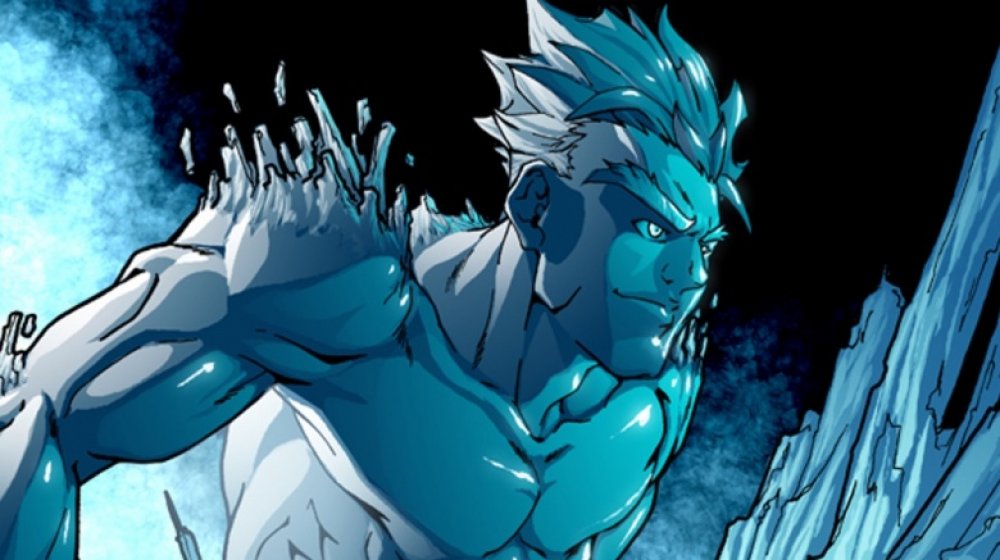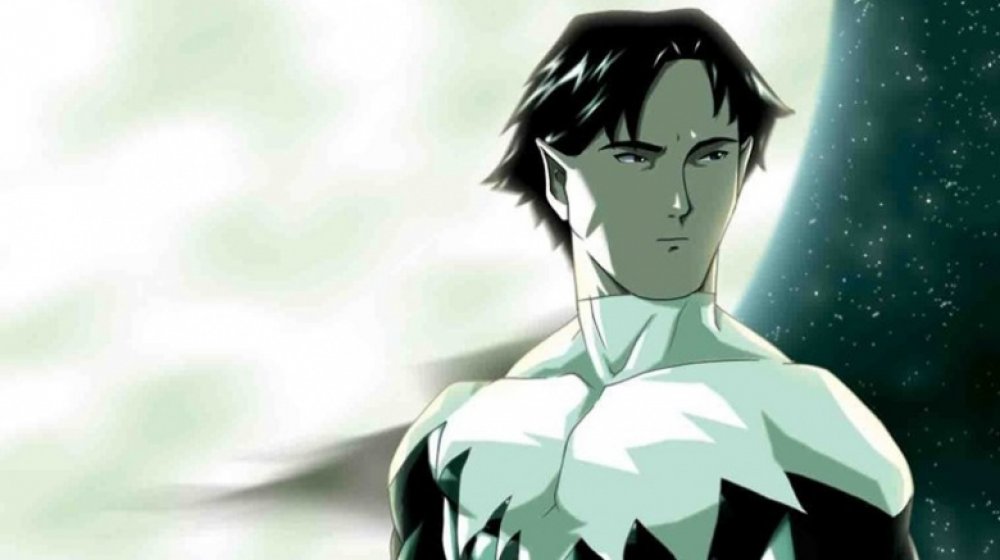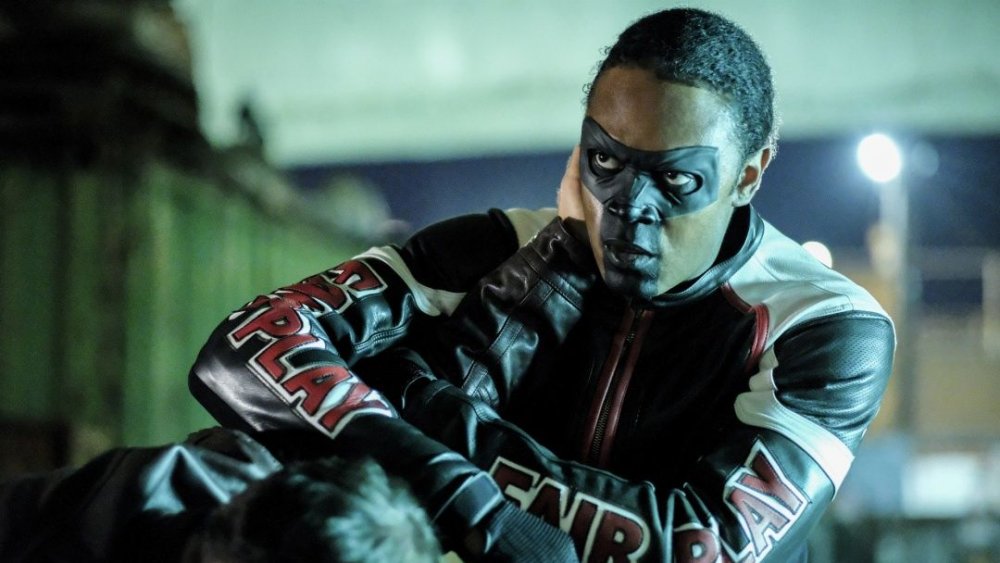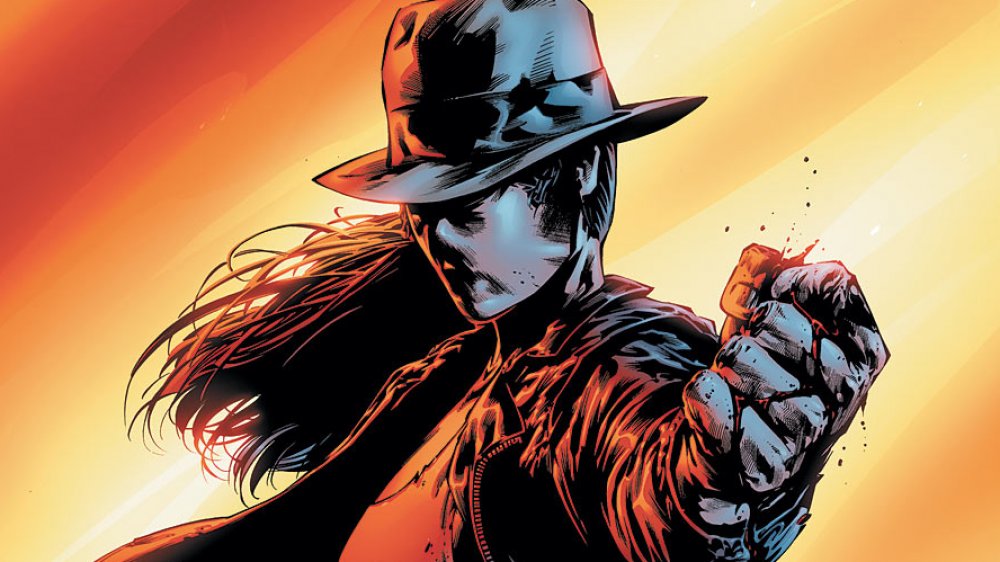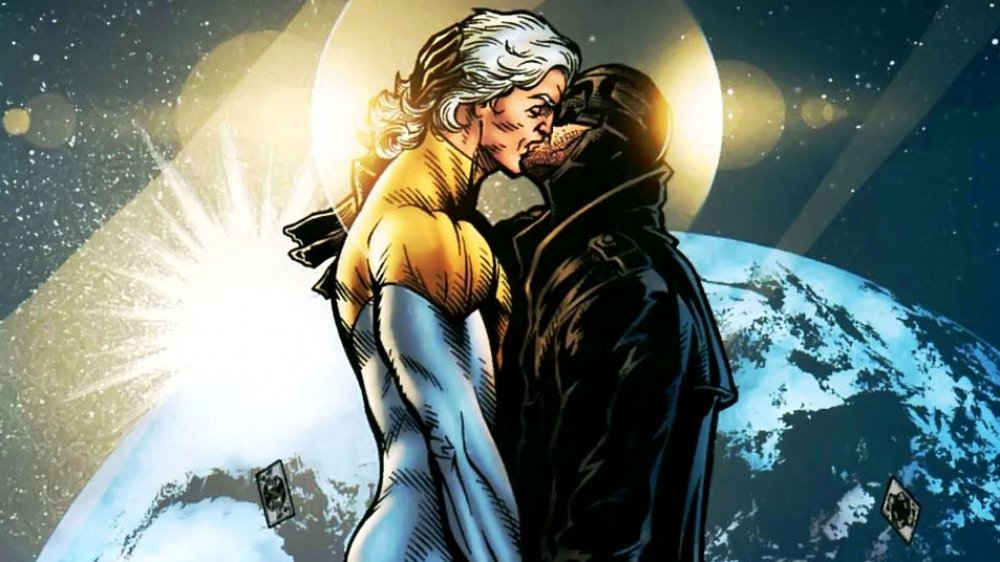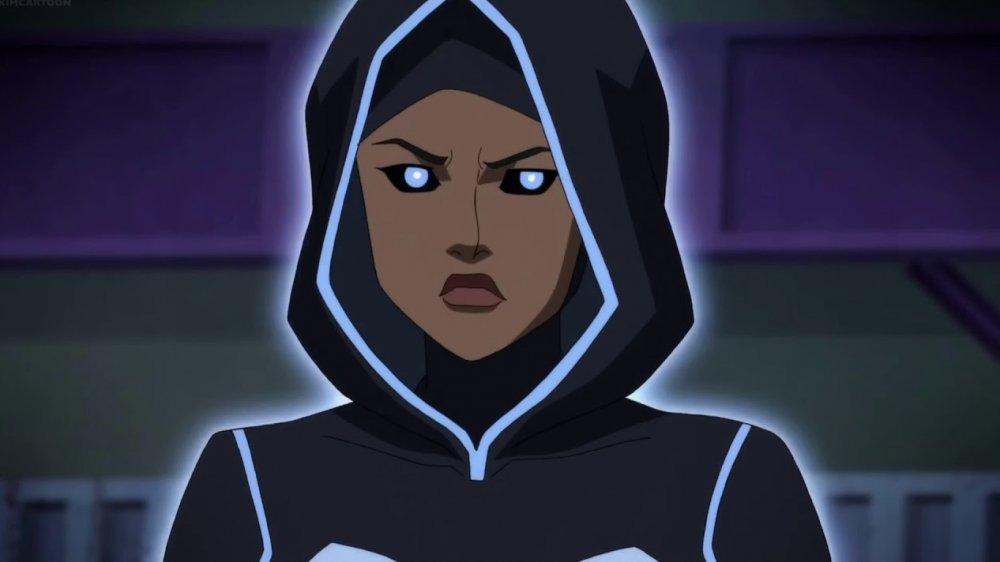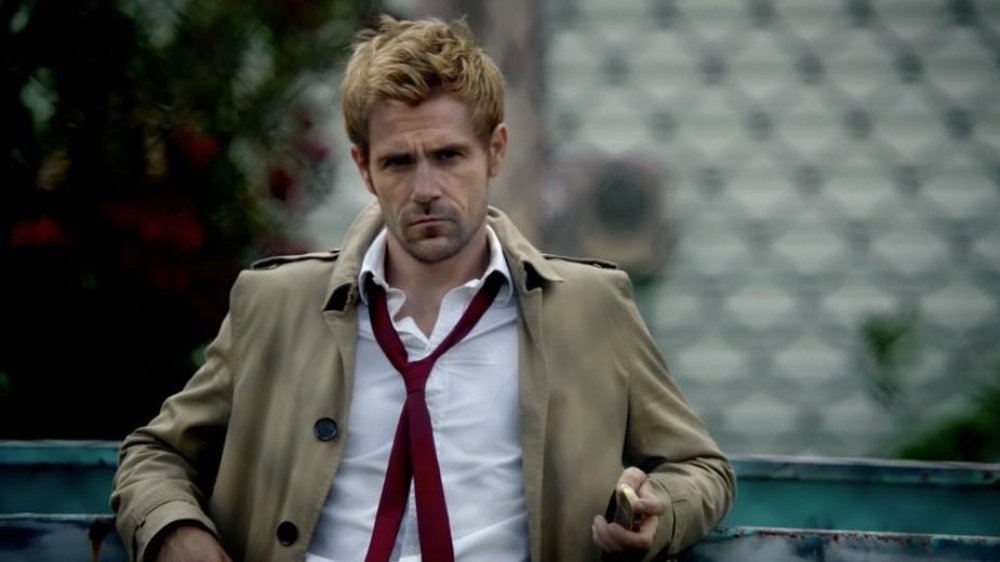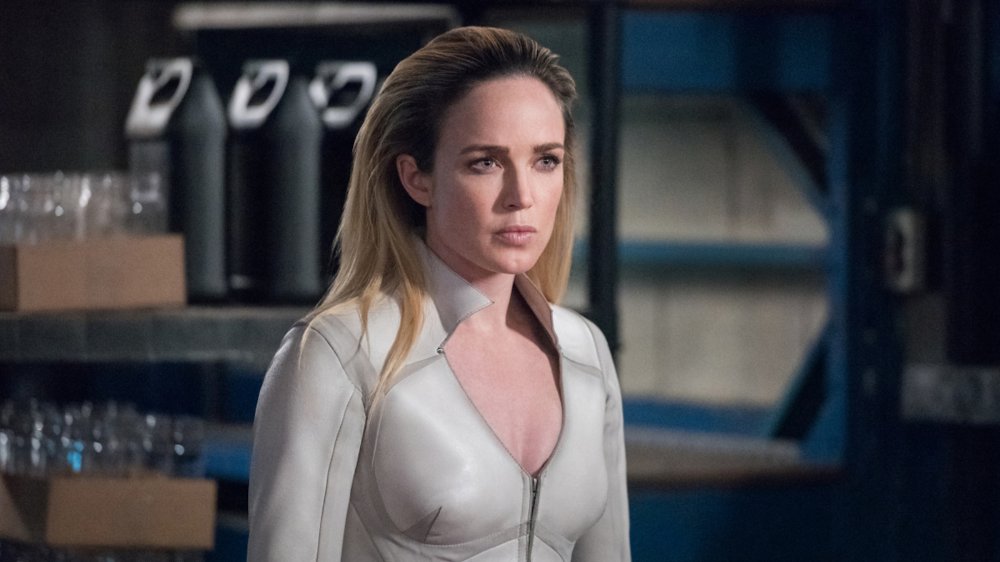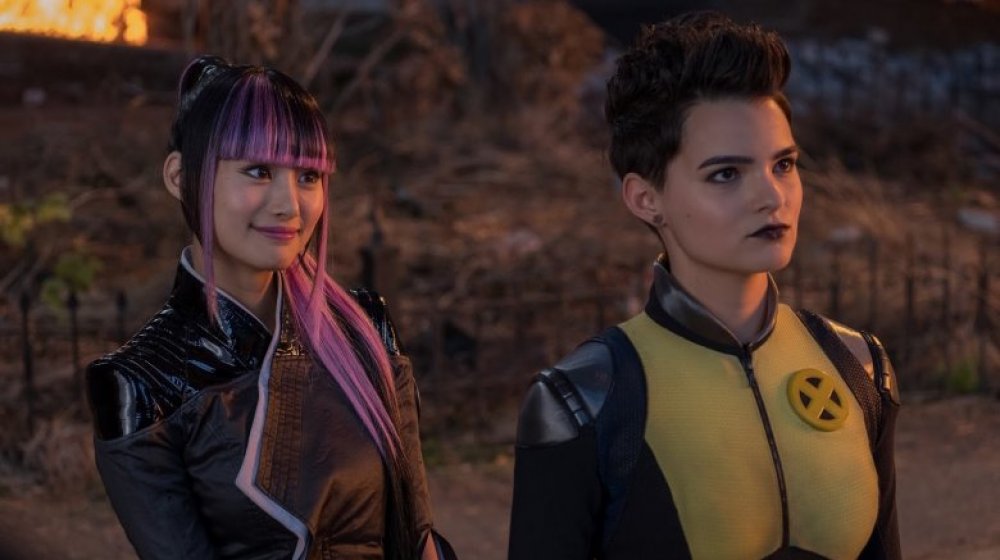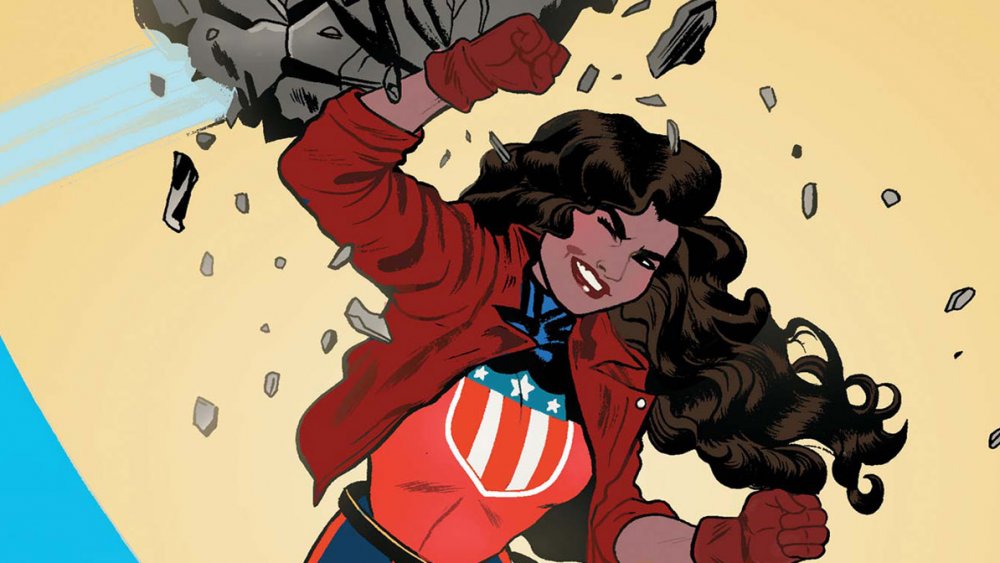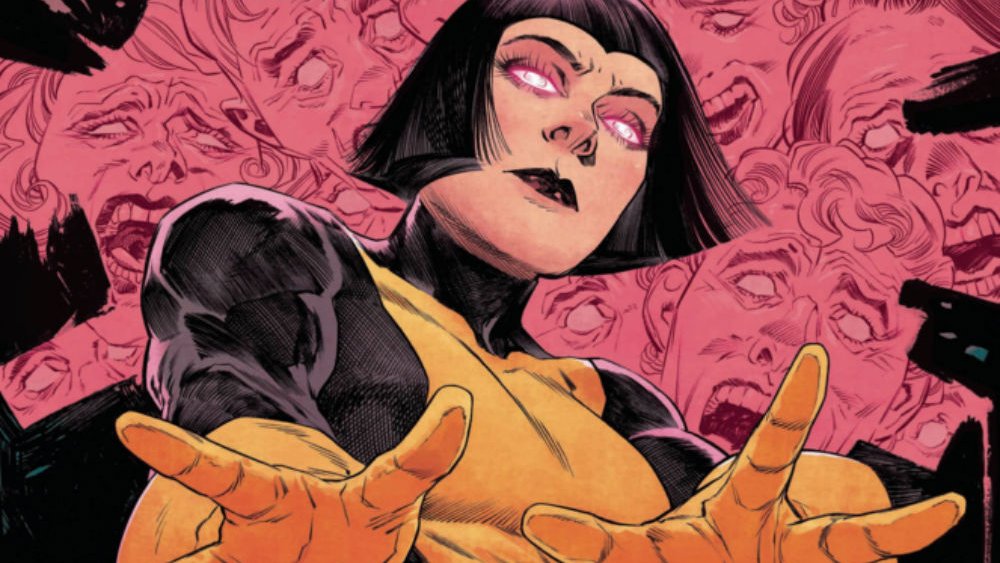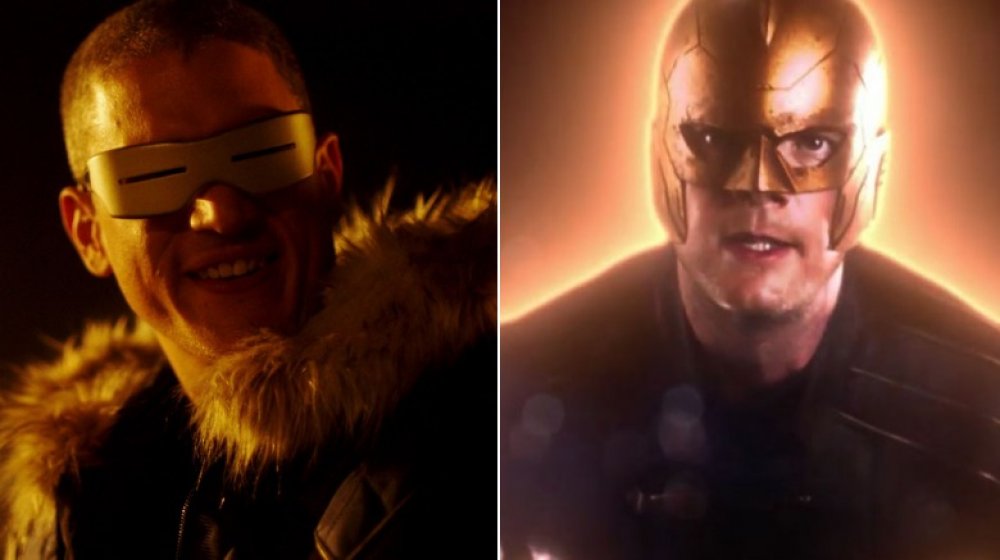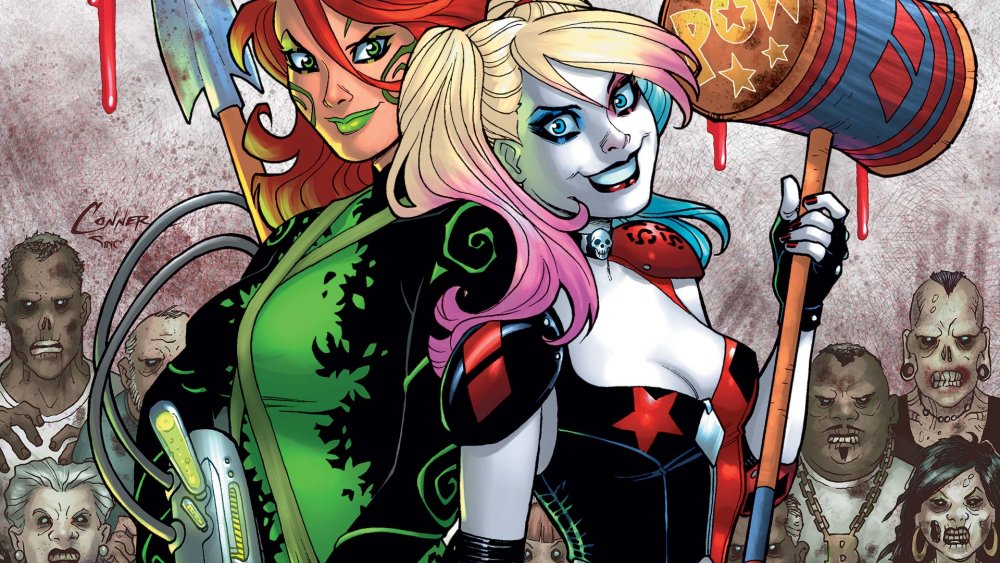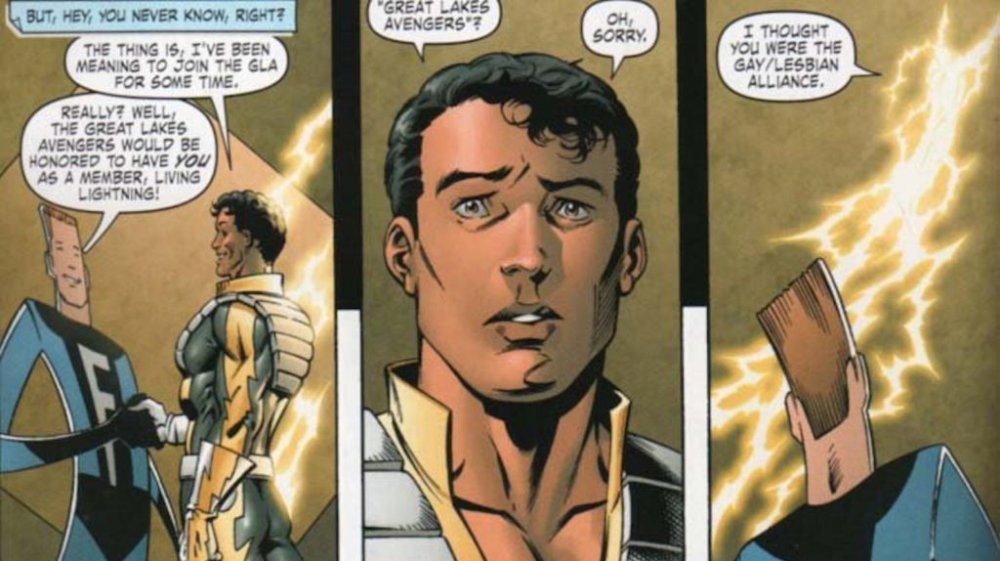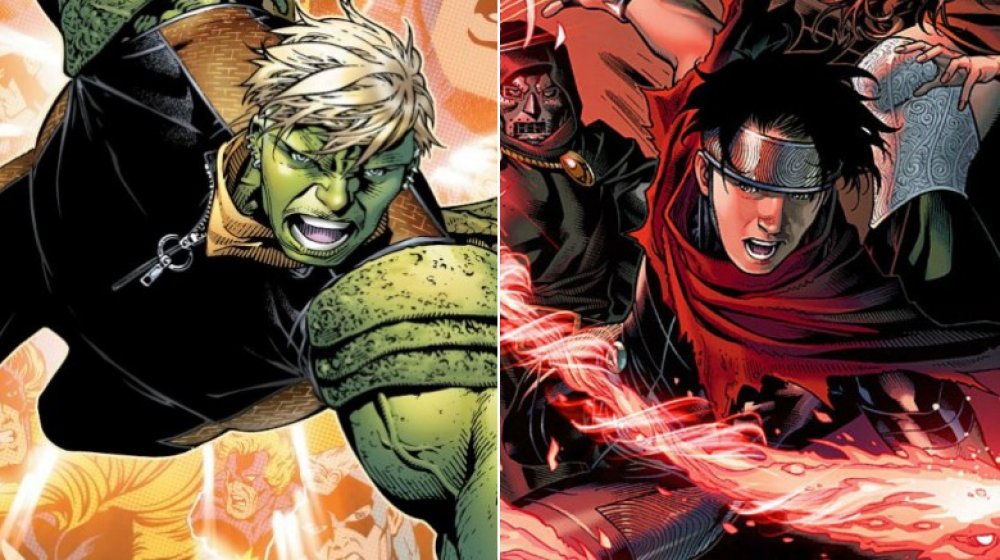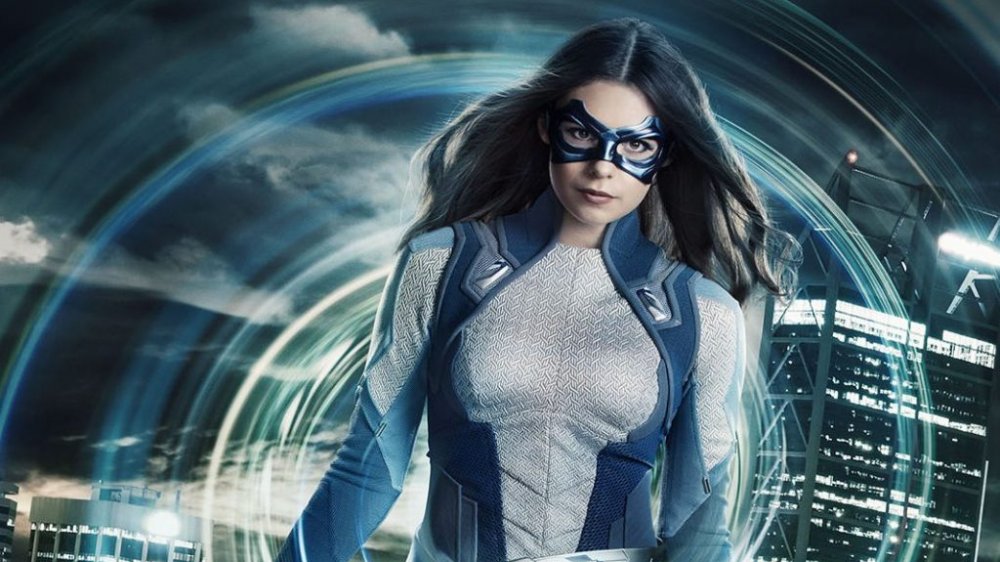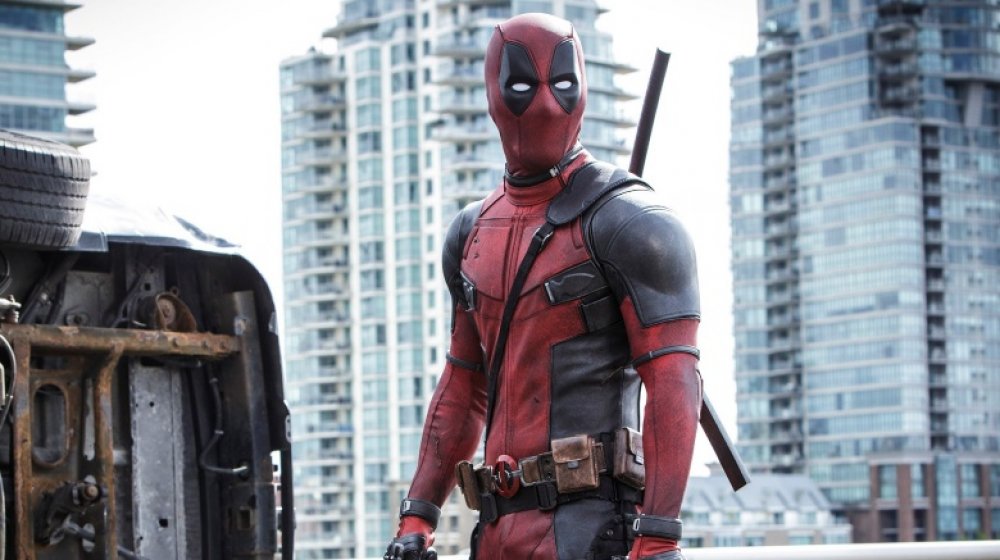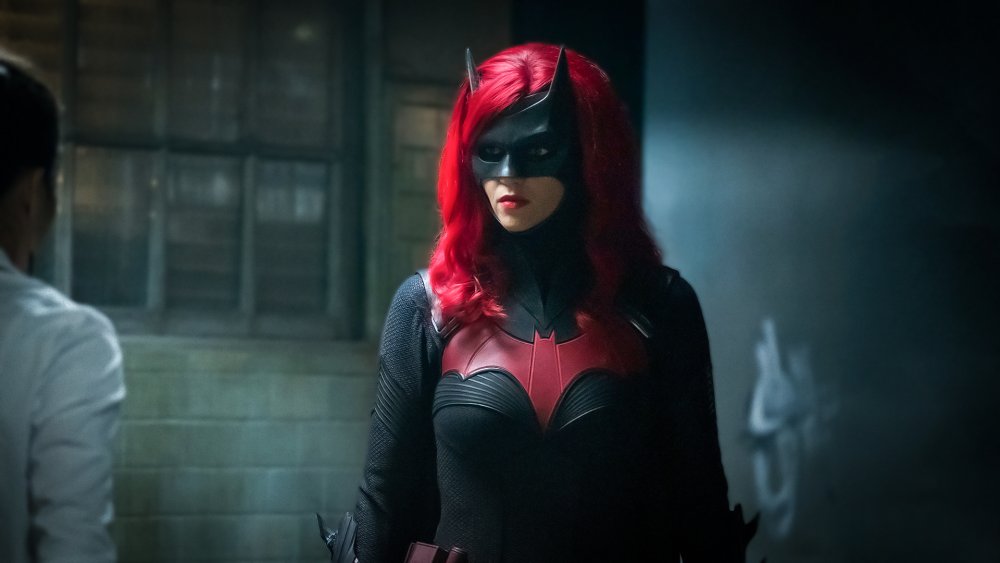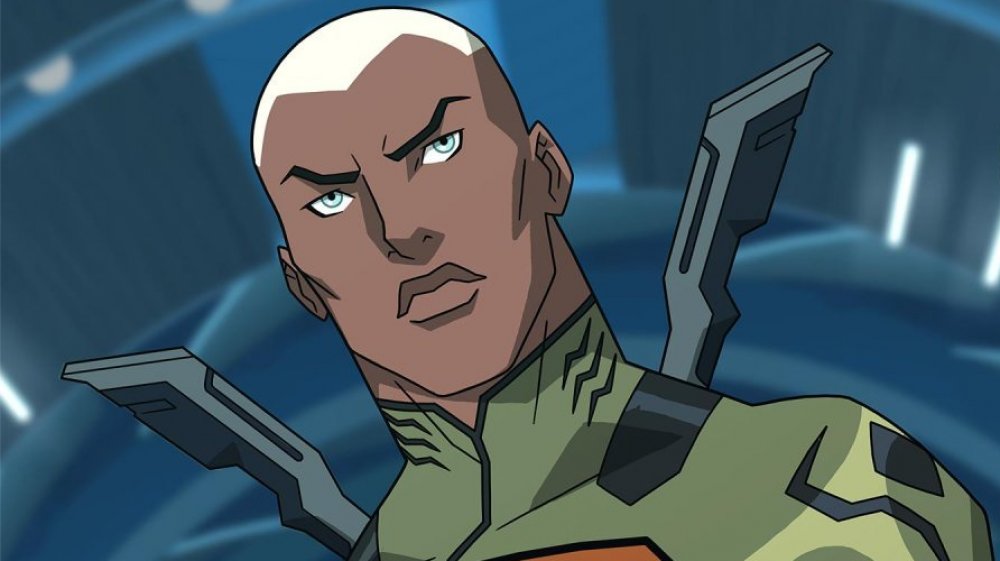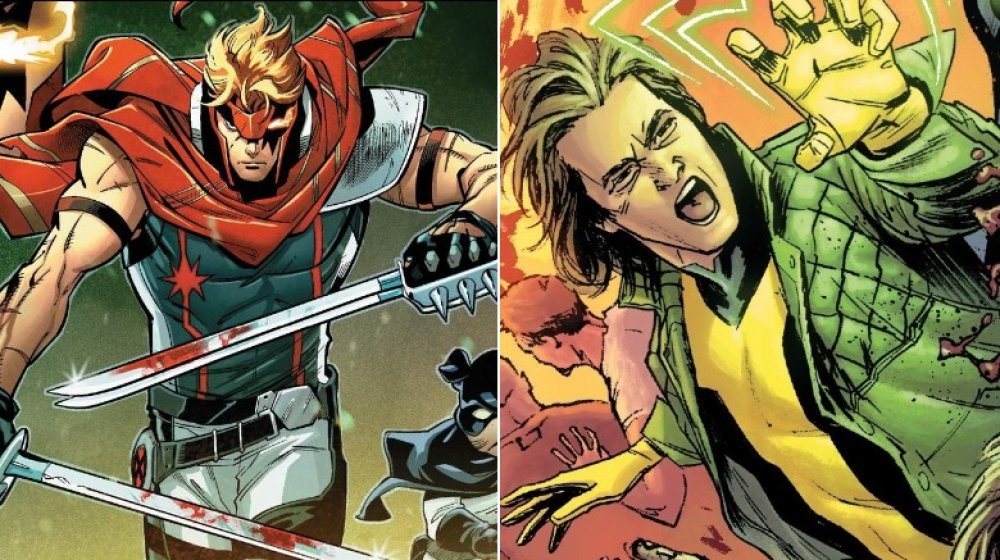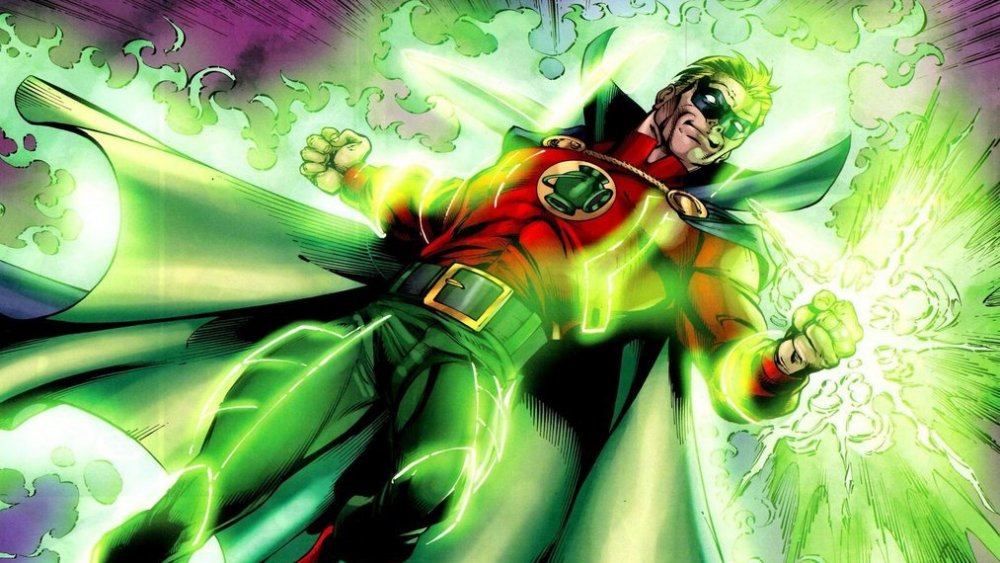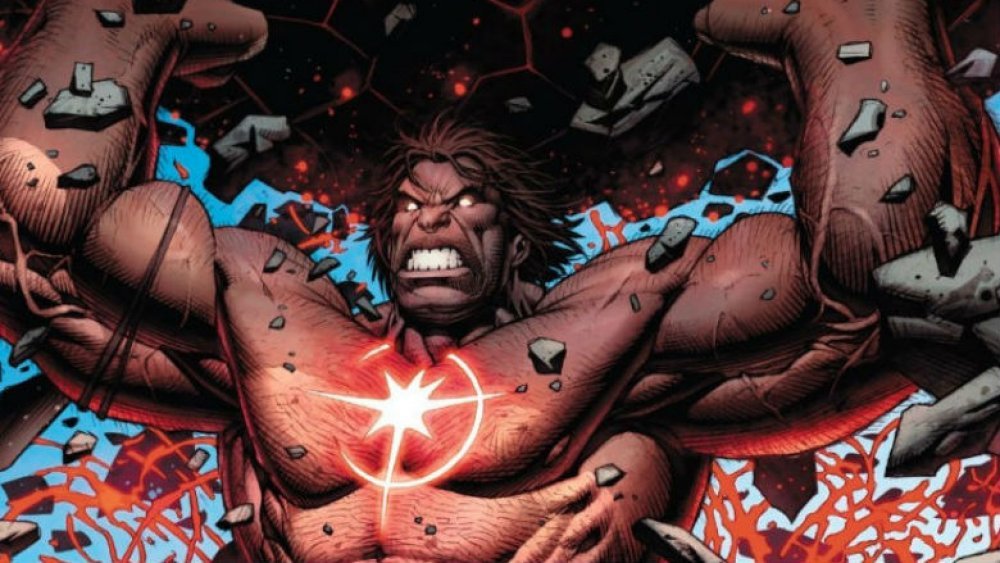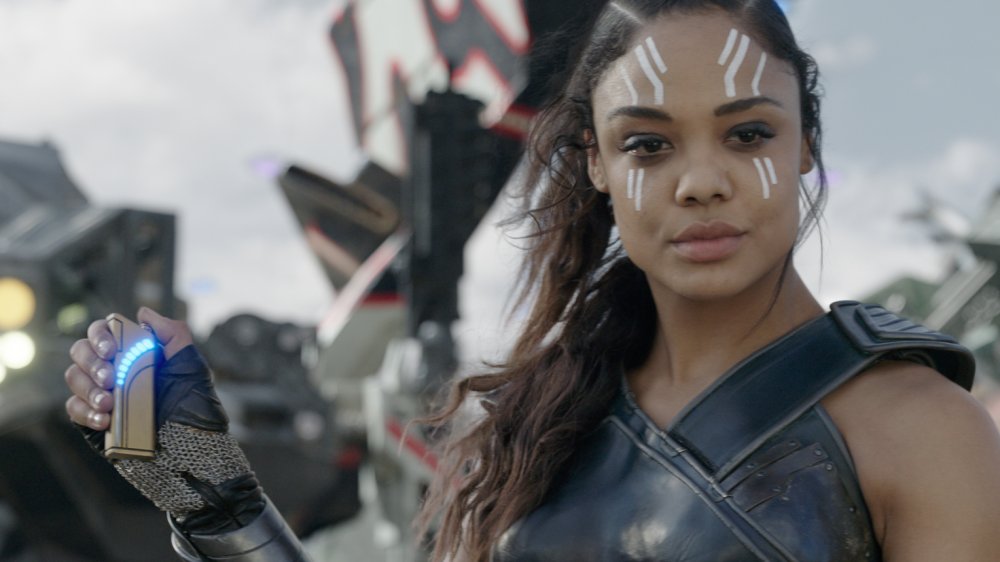Superheroes That Are Openly LGBTQ+
In October 2019, the premiere of the CW's Batwoman made history. Set in the same Gotham City more well-known for caped crusaders like Batman and Robin, Batwoman is the first superhero TV show whose lead character is an openly gay woman.
Considering it's taken until 2019 for this kind of landmark — particularly in a pop culture landscape that's increasingly crowded with superhero stuff — you could hardly be blamed if you didn't think superhero comics and other media had that many LGBTQ+ heroes. But the truth is that the writers of superhero adventures have been making strides ever since the '90s to make the world of capes a more diverse one when it comes to sexual and gender identities. Sometimes those strides have been too slow and sometimes the introductions of LGBTQ+ characters aren't handled as well as they could've been. Regardless there's a fair chance — particularly if you're not familiar with the comics — that there are more LGBTQ+ superheroes in popular media than you realize.
On the small and big screens, as well as in the panels, here are many of the LGBTQ+ superheroes saving the world for all of us.
Iceman
In 2015, Marvel Comics readers learned one of the original X-Men — Bobby Drake, a.k.a. Iceman — was a gay man, and the way it unfolded was unique in a way that could only happen in a superhero comic.
When All-New X-Men was launched in 2012, the title was more than a little ironic. The series opens with the original five X-men, including Iceman, being brought into the present while they're still teenagers. So when the teen Jean Grey takes the teen Iceman aside in 2015's All-New X-Men #40 to reveal that she knows he's gay, there is also an older version of Iceman out there in the world who has been dating women for his entire adult life. In fact, part of the reason teen Iceman has trouble accepting his sexuality is because his older counterpart appears to be straight. How could he be gay if his future counterpart isn't?
Later that year, confronted by the younger versions of Iceman and Jean Grey, the adult Bobby Drake admits he's been in the closet for years in Uncanny X-Men #600. Since coming out, Iceman has enjoyed a number of short-lived solo series, and he also joined the team crossing the seas with Kitty Pryde to help oppressed mutants escape to the island haven of Krakoa in Marauders.
Northstar
In 1992, Marvel Comics made history with its first openly gay superhero. In Alpha Flight #106, during a battle with the World War II era superhero Major Mapleleaf, Northstar admits that he's gay. Shortly after the fight, he opens up to the world at large, and his coming out is on the front page of the Canadian newspapers.
Northstar's visibility in Marvel Comics has had its ups and downs ever since. He eventually left Alpha Flight for the more well-known X-Men. Northstar was a teacher at Xavier's Institute and was famously murdered (and later resurrected by the Hand) by a mind-controlled Wolverine in 2005's Wolverine #25. More recently Northstar and his sister Aurora joined the mutants of Marvel — heroes and villains and everything in between — on the island haven of Krakoa as part of Marvel's Dawn of X revamp of the X-Men.
Still, while he may not be a Marvel A-lister, his 1992 coming out issue wasn't the last time the character made history. Same-sex marriage became legal in the New York of Marvel and the real world in 2011, and Northstar and his partner Kyle were wed in Marvel's first same-sex superhero nuptials in 2012's Astonishing X-Men #51.
Mr. Terrific
Curtis Holt, played by Echo Kellum, has been an openly gay man since his first appearance on CW's Arrow, though he wasn't always a superhero.
Holt has appeared regularly on Arrow since its fourth season, though initially — much like his friend Felicity Smoak — he was content to be the "guy in the chair," i.e. the guy coordinating things from Oliver Queen's "Arrowcave," communicating with the team and hacking into whatever needed to be hacked into. But after he was attacked by street thugs in the show's fifth season, Curtis — already a bronze medal Olympic athlete — asked Oliver to train him for more hands-on work. Borrowing the ring name of his favorite wrestler and using his ingenious gadgets to help fight crime, Holt became Mr. Terrific.
Holt's time as a vigilante hasn't come without cost. Later in Arrow's fifth season, Curtis' husband Paul leaves him after discovering his hidden crimefighting life. Fortunately, love finds Curitis once more in the form of Star City police officer Nick Anastas. Holt's since given up crimefighting, but still helps Team Arrow in a guy-in-the-chair capacity if they need it.
The Question
Like Harley Quinn, Renee Montoya made her first appearance not in the comics, but in the '90s cartoon Batman: The Animated Series. But it would be over a decade before the former Gotham detective would become a bona fide superhero.
Montoya's first appearance in the comics was in 1992's Batman #475, in which she's introduced working with Harvey Bullock in Gotham's Major Crimes Unit. She earned much more of the spotlight in 2002 with Gotham Central — a comic focusing on the Gotham City Police Department and how they operate in city full of supervillains. Fed up with the force's corruption, Montoya quits the GCPD and falls on hard times. She drinks habitually and loses her girlfriend Daria. The vigilante Vic Sage, a.k.a. the Question, recruits Montoya in the series 52 to help him fight the criminal organization Intergang. By the time the series ends, Sage succumbs to cancer. After mourning Sage, Montoya takes up the mantle of the Question herself.
In spite of a couple of revamps and reboots, Montoya has remained the Question in the comics — in spite of Vic Sage showing up alive and well in the 2019 miniseries Event Leviathan. More recently, Montoya has helped Superman's wife in the espionage thriller miniseries Lois Lane. Outside of the comics, Rosie Perez brought Montoya to life in the 2020 film Birds of Prey, though it's still not known if this version of Montoya will likewise become the Question.
Midnighter and Apollo
The same-sex superhero couple Midnighter and Apollo were originally a part of DC's Wildstorm universe. While both characters originally appeared in StormWatch, the pair became much more well-known as part of the late '90s to early aughts comic The Authority. The heroes were noteworthy for not only being some of the earliest openly gay heroes, but for being obvious reflections of Batman and Superman. The pair eventually married, though one of DC's many reboots undid the union.
In the 2011 line-wide reboot The New 52, Midnighter and Apollo were reintroduced in the new Stormwatch series — this time as part of the prime DC Comics reality — but were portrayed as having met for the first time. During the course of their somewhat rocky relationship, they've become a couple, broken up, and gotten back together for the 2016 miniseries Midnighter and Apollo. The pair remain part of the main DC Comics narrative, and Midnighter is considered part of the Bat Family.
Halo
When the DC Universe streaming service revived the animated series Young Justice, its new season introduced Halo, a hero identifying as gender neutral.
Before gaining their powers, Halo is a girl named Gabrielle in the fictional nation of Qurac. After Gabrielle dies and is fused with the soul of a Motherbox — an advanced living technology from the planet New Genesis — they become an entirely new person, Halo, with a set of mysterious and extraordinary powers including the ability to revive from multiple fatal injuries.
When they join the Outsiders, Halo takes the name Violet Harper and enters a relationship with the young hero Geo-Force. Soon after, Halo comes out as gender neutral to Geo-Force, saying that while their body is female, they cannot say they can identify as either male or female. Geo-Force accepts this and clearly still wants to be with them, though eventually it's Halo who leaves Geo-Force after the latter publicly executes his own uncle for conspiring against him and his family.
John Constantine
The first time John Constantine's bisexuality is mentioned is in 1992's Hellblazer #51, and the reveal doesn't come with a lot of fanfare. Speaking of how he doesn't maintain a lot of longterm relationships, Constantine's narration reads "Girlfriends, the odd boyfriend... They all have the nasty habit of walking out on me."
In neither the 2005 film Constantine starring Keanu Reeves as the titular hero nor the 2014 TV series of the same name starring Matt Ryan as the title character is there any mention of Constantine's bisexuality. Finally, when Matt Ryan's version of Constantine became part of CW's Arrowverse, his bisexuality was explicitly addressed.
Constantine becomes a recurring character on Legends of Tomorrow in the show's third season, and we see him in romantic situations with both men and women. He and Sara Lance have a one-night stand, and later we learn he and the Time Bureau goofball Gary have some kind of brief fling. We eventually learn that years earlier Constantine was in a relationship with a male bartender named Desmond. In fact, Constantine is plagued with guilt over memories of his old lover, who he is forced to send to Hell in order to banish the demon Neron from Earth.
Sara Lance, a.k.a. the Canary
Sara Lance is one of the earliest characters to be introduced in the Arrowverse, though when we first see her and Oliver Queen as lovers aboard the doomed Queen's Gambit in the first season of Arrow, Sara's played by a different actor.
Presumed drowned after the Gambit's shipwreck, Sara Lance survives and is taken prisoner aboard the ship Amazo – property of the mad scientist Dr. Ivo, who trains Sara to become his assistant. After reuniting with Oliver and being presumed drowned a second time, Sara is rescued by Nyssa al Ghul of the League of Assassins and recruited into the secret organization. Nyssa and Sara become lovers.
Sara has had both male and female partners since returning to Starling City in Arrow. Sara's since become one of the regular characters on Legends of Tomorrow and took over the Captain's chair of the series' time and space ship, the Waverider. She's also had brief flings with Oliver Queen and John Constantine, and is currently in a long-term relationship with Ava Sharpe — the Legends' Time Bureau contact and a genetically engineered clone from the 23rd century.
Yukio and Negasonic Teenage Warhead
Marvel Studios has made some unforgettable superhero films in the past decade. While opinions will always vary, the uneven quality of the X-Men franchise and the failure of the last couple of tries at a Fantastic Four helped make a lot of fans happy when Disney acquired Fox Studios. Still, there's at least one important landmark the Fox/Marvel films met before Marvel — the first same-sex couple comprised of Marvel superheroes.
In 2018's Deadpool 2, we learn that Negasonic Teenage Warhead — one of the only X-Men to appear in the first Deadpool — is in a same-sex relationship with a young X-Men member named Yukio. We don't see a lot of their relationship, but the duo joins Wade and the rest of the heroes in the climax of the film in their final attempt to save Rusty from himself. The pair appear just in time to save Colossus from Juggernaut, and to contribute to the latter's less-than-pleasant fate.
America Chavez
America Chavez is a lesbian raised by a gay couple — and she's also one of Marvel's most powerful superheroes. She's super strong, she can fly, she has super speed, and she's nearly invulnerable. America's most unique ability is the power to travel between dimensions, and in certain cases she can travel through time as well. When her series America launched in 2017, she became the first LGBTQ+ person of color to lead her own ongoing title in the history of Marvel Comics.
Originally known as Miss America and first appearing in the 2011 miniseries Vengeance, America would later join the Young Avengers. She gained a lot more attention during the 2015 line-wide event Secret Wars when she was part of the all-female A-Force. Along with her solo series, America joined the Ultimates and eventually became the team's leader. More recently she was part of a new incarnation of the West Coast Avengers, led by the group's founding member Hawkeye.
Karma
Xi'an Coy manh, a.k.a. Karma, is one of the founding members of the New Mutants — the junior X-Men team — and an openly gay superhero. As a mutant she has the telepathic ability to take over the minds of other people, or even animals, and make them do what she wants. First appearing in 1980's Marvel Team-Up #100, Karma is the only member of the original New Mutants to appear in a Marvel comic book before 1982's New Mutants graphic novel.
Karma first starts being open about her sexuality in the early aughts. She harbors an unrequited love for Kitty Pryde in the 2002-2003 miniseries Mekanix, and openly refers to herself as a lesbian for the first time in 2003's New Mutants #4.
While her sexuality wasn't explicitly stated until 2003, there were previously hints that Karma had previously been written as a lesbian. For example, in 1998's X-Force #75, Karma says something that could mean nothing or could mean a lot. When she asks Mirage if she ever had "a thing" for their teammate Cannonball, Mirage says he isn't her type and throws the question back to Karma, who pointedly says, "Oh, definitely not my type."
Leo Snart and The Ray
The CW's Arrowverse — like the universe of DC's comics — consists of a vast multiverse of various alternate realities. One of those realities is Earth-X, where the Nazis won World War II. The Earth-X alternates of the Arrowverse's heroes tend to be villains serving the Reich on Earth-X: like Overgirl instead of Supergirl, and Dark Arrow rather than Green Arrow.
In the 2017 CW crossover Crisis on Earth-X, characters from The Flash, Arrow, Legends of Tomorrow, and Supergirl are brought to Earth-X. Most are freed from a concentration camp by the Freedom Fighters — The Ray and Leo Snart, a.k.a. Citizen Cold (though his Earth-1 counterpart is known as Captain Cold). We eventually learn that Ray and Leo are in love, and that their sexuality made them a target of the Nazis.
In season 4 of The Flash, the heroes ask for Citizen Cold's help in transporting a metahuman to A.R.G.U.S. Upon arriving on Earth-1 and reuniting with his old comrades, Leo is met with cheers and congratulations when he announces that back on Earth-X, he and the Ray were getting married.
Harley and Poison Ivy
For a long time it was one of DC Comics' worst kept secrets that Harley Quinn was bisexual and in a non-monogamous relationship with fellow Gotham City anti-hero Poison Ivy. They'd been friends and more in comics, cartoons, and even video games for years — trading innuendo and hints — but for a long time there was no official word. Harley Quinn writers Jimmy Palmiotti and Amanda Conner confirmed Harley and Ivy's relationship status in 2015, and fans finally got to see the pair share a kiss in 2017's Harley Quinn #25.
Harley was devastated when Poison Ivy proved to be one of the many victims to fall in the 2018-19 DC miniseries Heroes in Crisis. Thankfully, by the end of the series, it's discovered Ivy prepared for the potential of her death by creating a plant-based clone of herself who went on to team up with Harley in the Harley Quinn & Poison Ivy miniseries.
The 2020 film Birds of Prey vaguely explored Harley Quinn's sexuality in the opening crawl, which offered a glimpse of an old girlfriend. Margot Robbie — who stars as Quinn — has gone on the record as saying she wants to see more of Harley's sexuality onscreen, but as to whether that will happen after Birds of Prey, we'll have to wait and see.
Living Lightning
Miguel Santos, a.k.a. Living Lightning, boasts one of the most unique coming out scenes in the history of comics.
Every now and then an obscure parody version of the heroic Avengers — the Great Lakes Avengers — make an appearance in Marvel's comics. First appearing in 1989's West Coast Avengers #46, the team has members with unpromising names like Flatman, Leather Boy, Tippy Toe, and Mister Immortal (whose only power is that he keeps coming back to life after being killed). In 2005, they enjoyed their own miniseries, GLA. In GLA #2, they go on a recruitment drive and what follows is page after page of nothing but more well-known superheroes telling them "No" or less polite variations. Finally, Living Lightning not only says yes to Flatman but says he's been meaning to join the GLA "for some time." When Flatman tells him the Great Lakes Avengers would be honored to have him, Living Lightning responds, "'Great Lakes Avengers'? Oh, sorry. I thought you were the Gay/Lesbian Alliance," and flies away. If nothing else, it manages to be perhaps the funniest coming out superhero scene, without getting the laughs at the LGBTQ+ character's expense.
We don't know a lot about Living Lightning's relationships and haven't seen a lot of the hero over the years. He appeared most recently as part of the large team of Avengers assembled for the 2018 event Avengers: No Surrender.
Hulkling and Wiccan
The heroes Hulkling and Wiccan enjoy one of the longest-running same-sex relationships in comics. They were introduced in Young Avengers #1, when both the heroes seemed — like the rest of the team — to be younger versions of classic Avengers whose origins were shrouded in mystery.
What's particularly interesting is who these two were based on. Hulkling, as his codename suggests, looked like a younger and smaller version of the Hulk. Wiccan, on the other hand, goes by the name "Asgardian" when he's introduced, suggesting a connection to Thor. So it was particularly and wonderfully subversive to base these two young gay men on heroes — Hulk and Thor — who are known to regularly beat the tar out of one another. Though of course neither Hulkling nor Wiccan proved to have any significant connection to those classic Avengers. Hulkling's physical appearance is due to his mixed Skrull/Kree ancestry and has nothing to do with gamma rays. Wiccan eventually learns he's one of the twin sons born to the mutant Scarlet Witch and the android hero Vision.
Hulkling and Wiccan have never strayed far from the spotlight of Marvel Comics since their introduction. Both recently appeared in the 2019 Death's Head miniseries and Wiccan is one of the new team of non-traditional heroes like Blade, Winter Soldier, and Angela in the ongoing series Strikeforce.
Dreamer
The third season of CW's Supergirl made a huge stride in LGBTQ+ representation by introducing TV's first transgender superhero to audiences. Nia Nal, a.k.a. Dreamer, is a trans woman of mixed human and alien heritage who inherits her powers after her mother's death.
Nia's mother Isabel was from the planet Naltor and used the title of Dreamer before Nia. Naltorian Dreamers are women of extraordinary abilities, including often receiving precognitive visions in their dreams. A Naltorian Dreamer's power passes to her daughters, so when Nia's mother dies, Nia is initially confused about the Dreamer abilities beginning to manifest in her because she wasn't biologically born female. We eventually learn Isabel always knew it would be Nia, and not her sister Maeve, who would inherit the powers. Sadly, while up to this point Nia's family has appeared to be nothing but accepting towards her transgender identification, the revelation that she won't inherit her mother's abilities cause a lot of ugliness to boil out of Maeve.
Dreamer has been a close friend and ally to Supergirl since obtaining her abilities, and she's enjoyed a somewhat rocky romantic relationship with Supergirl's ally from the future, Brainy (a.k.a. Brainiac from the Legion of Super-Heroes).
Deadpool
In the comics it's no secret that Wade Wilson — the hilarious and bloody mercenary Deadpool — is pansexual. Longtime Deadpool writer Gerry Duggan has gone on record saying the Merc with a Mouth sets his sexual boundaries at "anything with a pulse." So far we haven't seen a lot of that reflected in his big-screen appearances, though Deadpool 2 certainly ramps up Wade's fixation on the ironclad mutant Colossus.
With the Disney-Fox merger putting Deadpool in the hands of a company known for more family-friendly content, the future of Ryan Reynolds as Deadpool still seems up in the air. But if we do get a Deadpool 3 and/or X-Force, there's a fair chance we'll eventually see Wade Wilson's pansexuality expressed more explicitly in the films. Reynolds says he wants to see that side of Wade come out more on the big screen. At the 2018 San Diego Comic Con, the actor said one of the things he loves about the Deadpool films is that they can go places other superhero movies can't or won't, and he specified LGBTQ+ representation as one of those places, adding that he specifically wanted to explore that "through Wade."
Batwoman
October 2019 saw the premiere of CW's Batwoman. Set in the same narrative as so-called "Arrowverse" shows like Arrow, The Flash, and Legends of Tomorrow, the new series stars Ruby Rose as the titular hero. Behind the mask is Kate Kane, cousin to Bruce Wayne. Kate returns to Gotham, learns her cousin is the Dark Knight (explaining why both have been missing for three years), and takes up his crimefighting cause in his absence. One of the more noteworthy differences between Batwoman and other superhero TV shows and movies is that, in a crowded field, Ruby Rose is playing the first openly lesbian superhero in a leading role.
The character first shows up in the Arrowverse in the 2018 crossover Elseworlds. In the following year's massive crossover, Crisis on Infinite Earths, Batwoman takes a prominent role in the conflict as the multiverse's Paragon of Courage.
This version of Batwoman was first introduced in the comics toward the end of the 2005-6 line-wide event Infinite Crisis, though at first fans weren't sure who she was. She soon enjoyed her own solo series and became a prominent part of the Bat Family, though Batwoman and Batman don't often get along. Shortly after DC's 2016 relaunch, Batman invited Batwoman to lead his new group of "Batmen," in Detective Comics, though he gave his cousin her walking papers after she killed the reformed villain Clayface.
Aquaman
When the DC Universe streaming service revived the Young Justice animated series, it included a reveal that the narrative's new version of Aquaman was in a same-sex relationship.
Orin, the more traditional version of Aquaman, retires from all things "super," and Kaldur — who had formerly been known as his sidekick Aqualad — assumes the name Aquaman as well as the leadership of the Justice League. In Young Justice: Outsiders, we learn Kaldur is in a same-sex relationship with the Atlantean Wyynde.
It isn't clear whether Kaldur identifies as gay or bisexual. In earlier seasons of Young Justice, Kaldur is shown to have romantic feelings for female characters. In particular, while still using the name Aqualad, Kaldur holds a torch for Tula, a.k.a. Aquagirl, and is heartbroken when she gets involved with his best friend Tempest. It could be that he's bisexual, or that in those earlier instances he hadn't yet come to accept his homosexuality.
Shatterstar and Rictor
The romantic relationship between the mutant heroes Shatterstar and Rictor is one that was hinted at for years but didn't become explicit until 2009.
The two heroes met in '90s issues of X-Force. They begin as teammates and close friends, with things slowly reaching beyond the platonic. One of the first big hints came in 1994's X-Force #34, when we learn Shatterstar has learned Spanish just so he can talk to Rictor without anyone else nosing in on the conversation. The following year when Rictor decides to return to Mexico to spend time with his family, the news is crushing to Shatterstar, who says things like "What am I going to do without you?" when he brings his teammate to the airport in Cable #22.
In spite of all the strong hints, it took until 2009 for an on-panel kiss between the heroes in X-Factor #45. The pair were regularly portrayed as being a couple since, though in more recent issues of Iceman, readers learned the two had broken up.
Alan Scott, a.k.a Green Lantern
The original Green Lantern to appear in DC's comics wasn't a member of an intergalactic space corp. Instead, Alan Scott, who made his debut as Green Lantern way back in 1940's All-American Comics #16, is a part of the more mystic side of DC's narrative. Another difference between him and the more space-worthy Hal Jordan is that in 2012's Earth 2 #2, we learned Alan Scott is gay. The death of his fiancé Sam becomes an important part of a new origin story as his engagement ring is molded into the hero's power ring.
Like most of the Golden Age heroes associated with the Justice Society of America, Alan Scott went missing in the wake of DC Comics' 2016 Rebirth relaunch. He and the rest of the JSA later turned up for the first time post-Rebirth in the pages of Justice League. Their appearance arrived alongside the line-wide event Year of the Villain that includes just about every DC hero out there, so there hasn't been a lot of time to focus on either the JSA or Scott, and we don't yet know a lot about what's currently going on in the hero's life.
Starbrand
In 2019's Avengers #26, Marvel revealed its Earth's very first gay couple included a member of its prehistoric Avengers.
Ever since Marvel's line-wide Legacy relaunch, Avengers readers have gotten snapshots of a version of the team that existed in prehistoric times. Occasionally, Avengers writer Jason Aaron has strayed from the present to give us the origin story of one of these B.C. Avengers, and Avengers #26 introduces us to that early team's Starbrand.
Early in the comic we meet a same-sex caveman couple living in a lush area they call the Garden. Through the narration we learn both left their respective tribes because they felt things they knew their tribes would never understand. Sadly, by the end of the issue, one of the cavemen has died at the hands of the villainous Deviants, while the other, Vnn, becomes Earth's second Starbrand — complete with a physical transformation that makes him look like a red-skinned version of the Hulk. Like the greener hero, Starbrand is filled with a seemingly limitless rage — though in Starbrand's case his anger revolves around the death of his beloved. When we later see him with his fellow prehistoric Avengers, we learn he almost never speaks, and mentally appears stuck in the moment he cradled his dead lover's body as their Garden burned all around them.
Valkyrie
In 2017, the hit Thor: Ragnarok revitalized the thunder god's franchise with a new brand of irresistible humor and a huge gladiator battle with the Hulk. Among the new characters introduced in Ragnarok was the tough, unapologetic binge drinker Valkyrie, played by Tessa Thompson. She reprised the role as one of the leaders of New Asgard in 2019's Avengers: Endgame – eventually being named its king at the end of the film — and we'll be seeing her again in 2021's Thor: Love & Thunder.
Valkyrie's sexuality isn't addressed in the theatrical versions of either Ragnarok or Endgame, but shortly after Thor: Love & Thunder was announced at the 2019 San Diego Comic Con, Marvel Studios confirmed Valkyrie would be the MCU's first openly LGBTQ+ superhero and that this would be addressed in the 2021 sequel. Thompson said Valkyrie was bisexual — just as she is in the comics — as early as 2017. But the only scene in Ragnarok addressing this was left on the cutting room floor.
Unfortunately, the comic book version of Valkyrie who was likewise bisexual is no longer with us. That hero, Brunnhlde, was killed by the dark elf Malekith in the line-wide event War of the Realms. The role of Valkyrie has since been taken up by Jane Foster, who Natalie Portman played in the first two Thor films and is also set to appear in Love & Thunder.
